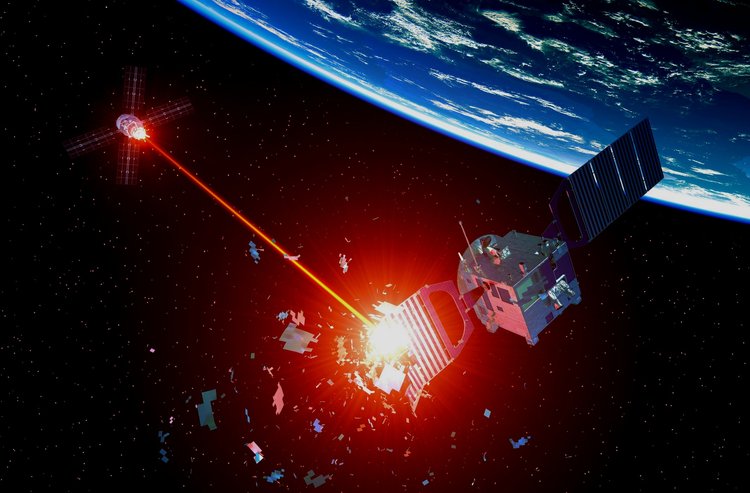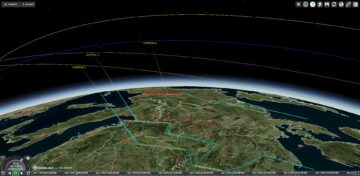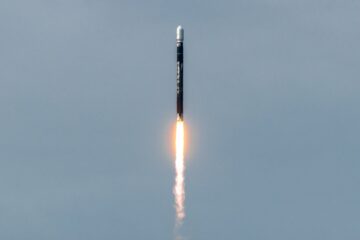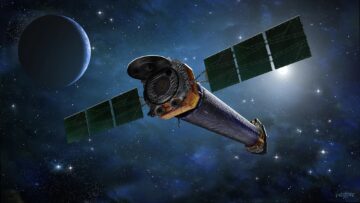
WASHINGTON — The startup GuardianSat announced Oct. 12 it won a grant from the National Science Foundation’s America’s Seed Fund to advance the company’s technology designed to protect satellites from collisions with debris objects in space.
GuardianSat, based in Delaware, won a Small Business Technology Transfer Phase 1 research contract worth about $273,000. In addition the company will get technical support from the Aerospace Corp. America’s Seed Fund invests up to $200 million a year in promising startups.
The company developed a debris-avoidance system for satellites, based on technology patented by one of its founders, Robert Briskman, who is a co-founder of Sirius XM satellite radio.
“Our patented solution is for high Earth-orbiting satellites,” said Huey Wyche, GuardianSat’s research lead. “It will include a subsystem to detect orbital debris, track potential collision threats, and autonomously adjust the satellite’s course to prevent accidents.”
Sensors for object detection
The debris-detection technology — called the Autonomous Satellite Orbital Debris Avoidance System — includes satellite control systems, sensor and tracking systems, and interfaces that cooperate with thruster and communication subsystems on a satellite, Wyche said. It is also designed to aid a satellite’s return to its original position after it maneuvers to avoid debris, and to share object data with other satellites to improve space domain awareness.
The NSF grant “will enable us to advance the development of our space domain awareness and avoidance systems,” said GuardianSat’s CEO Christopher Rohe. “We are excited to take the next steps in and continue advancing new and transformative solutions to keep space open.”
Rohe and Briskman founded GuardianSat in 2020.
Wyche said GuardianSat is taking a “multi-spectral approach to sensing orbital objects.” Multi-spectral sensors can differentiate between various types of objects based on their spectral signatures. “This capability is valuable for distinguishing between active satellites, defunct spacecraft, and space debris,” he explained.
The debris-avoidance system, Wyche added, is a companion technology to GuardianSat’s “anti-satellite countermeasure system” that is also in development. It uses microwave and lidar (light detection and ranging) to detect and track approaching objects.
- SEO Powered Content & PR Distribution. Get Amplified Today.
- PlatoData.Network Vertical Generative Ai. Empower Yourself. Access Here.
- PlatoAiStream. Web3 Intelligence. Knowledge Amplified. Access Here.
- PlatoESG. Carbon, CleanTech, Energy, Environment, Solar, Waste Management. Access Here.
- PlatoHealth. Biotech and Clinical Trials Intelligence. Access Here.
- Source: https://spacenews.com/startup-guardiansat-gets-research-grant-for-satellite-self-defense-technology/
- :is
- $UP
- 000
- 1
- 12
- 2020
- a
- About
- accidents
- active
- added
- addition
- adjust
- advance
- advancing
- Aerospace
- After
- Aid
- also
- and
- announced
- approach
- approaching
- ARE
- autonomous
- autonomously
- avoid
- awareness
- based
- between
- business
- by
- called
- CAN
- capability
- ceo
- Christopher
- Co-founder
- collision
- Communication
- companion
- company
- Company’s
- continue
- contract
- control
- COOPERATE
- Corp
- course
- data
- defunct
- Delaware
- designed
- detect
- Detection
- developed
- Development
- differentiate
- domain
- enable
- excited
- explained
- For
- Founded
- founders
- from
- fund
- get
- grant
- he
- High
- HTTPS
- improve
- in
- include
- includes
- interfaces
- Invests
- IT
- ITS
- Keep
- lead
- lidar
- light
- million
- National
- National Science
- New
- next
- NSF
- object
- objects
- Oct
- of
- on
- ONE
- open
- original
- Other
- our
- patented
- phase
- plato
- Plato Data Intelligence
- PlatoData
- position
- potential
- prevent
- promising
- protect
- Radio
- ranging
- research
- return
- ROBERT
- Said
- satellite
- satellites
- Science
- seed
- seed fund
- sensors
- Share
- Signatures
- small
- small business
- solution
- Solutions
- Space
- spacecraft
- Spectral
- startup
- Startups
- Steps
- support
- system
- Systems
- Take
- taking
- Technical
- technical support
- Technology
- that
- The
- their
- threats
- to
- track
- Tracking
- transfer
- transformative
- types
- us
- uses
- Valuable
- various
- WHO
- will
- with
- Won
- worth
- XM
- year
- zephyrnet








